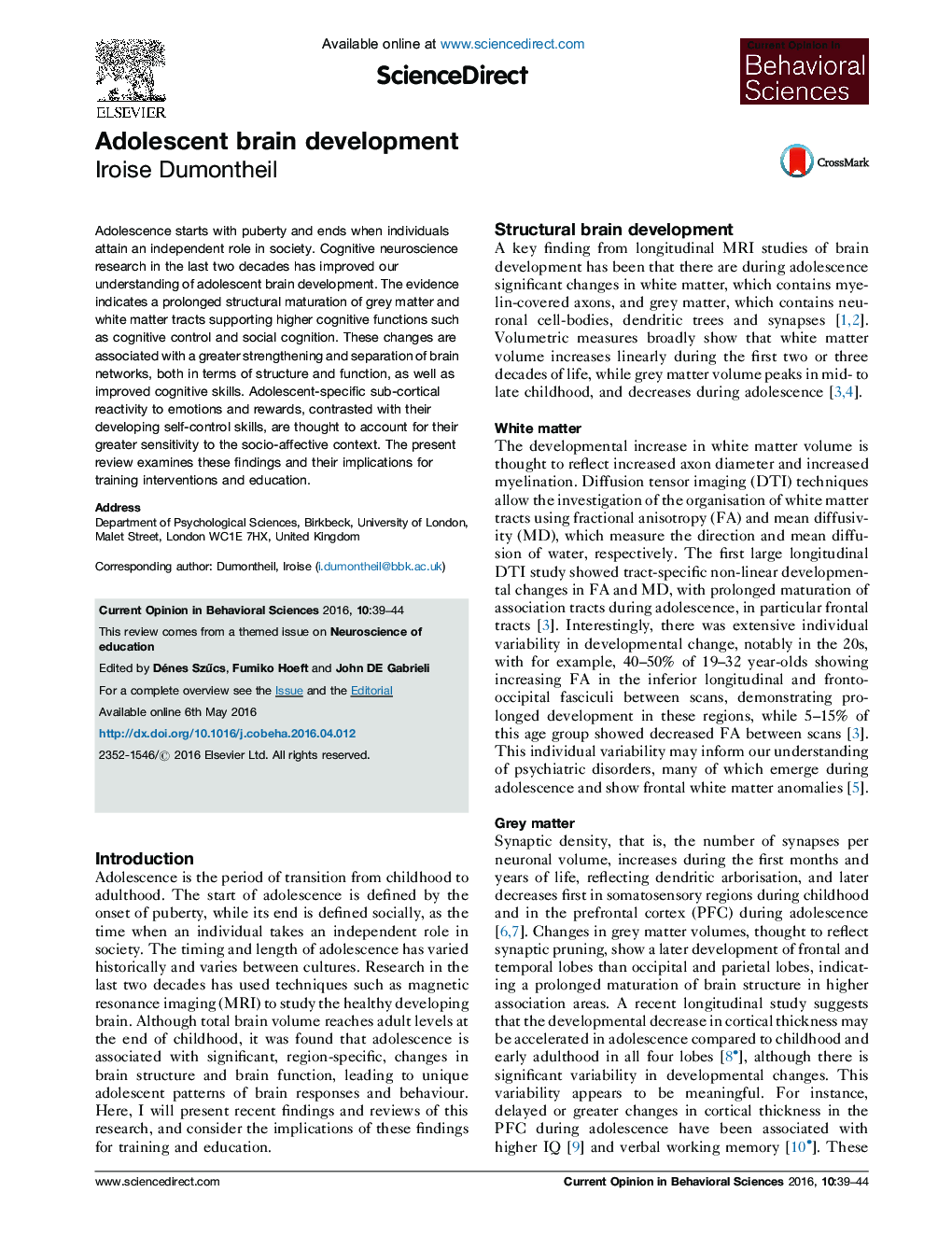| Article ID | Journal | Published Year | Pages | File Type |
|---|---|---|---|---|
| 6260358 | Current Opinion in Behavioral Sciences | 2016 | 6 Pages |
â¢Neuroimaging has revealed that brain structure develops until early adulthood.â¢Executive and social brain networks show functional maturation during adolescence.â¢Adolescents exhibit increased neural reactivity to emotions and rewards.â¢The socio-affective context influences adolescent decision-making.â¢Adolescence may be a sensitive period for socio-emotional and self-control training.
Adolescence starts with puberty and ends when individuals attain an independent role in society. Cognitive neuroscience research in the last two decades has improved our understanding of adolescent brain development. The evidence indicates a prolonged structural maturation of grey matter and white matter tracts supporting higher cognitive functions such as cognitive control and social cognition. These changes are associated with a greater strengthening and separation of brain networks, both in terms of structure and function, as well as improved cognitive skills. Adolescent-specific sub-cortical reactivity to emotions and rewards, contrasted with their developing self-control skills, are thought to account for their greater sensitivity to the socio-affective context. The present review examines these findings and their implications for training interventions and education.
